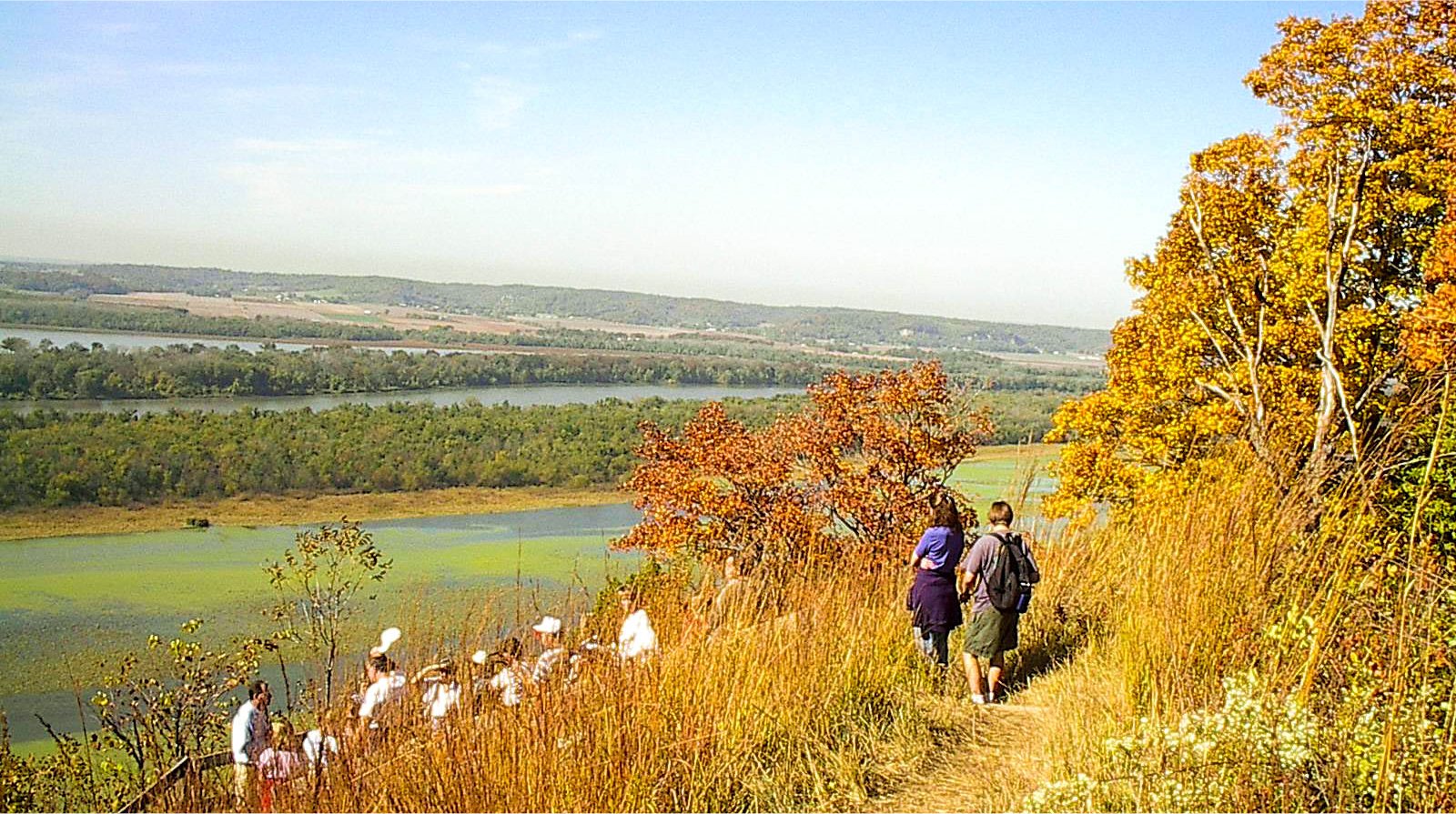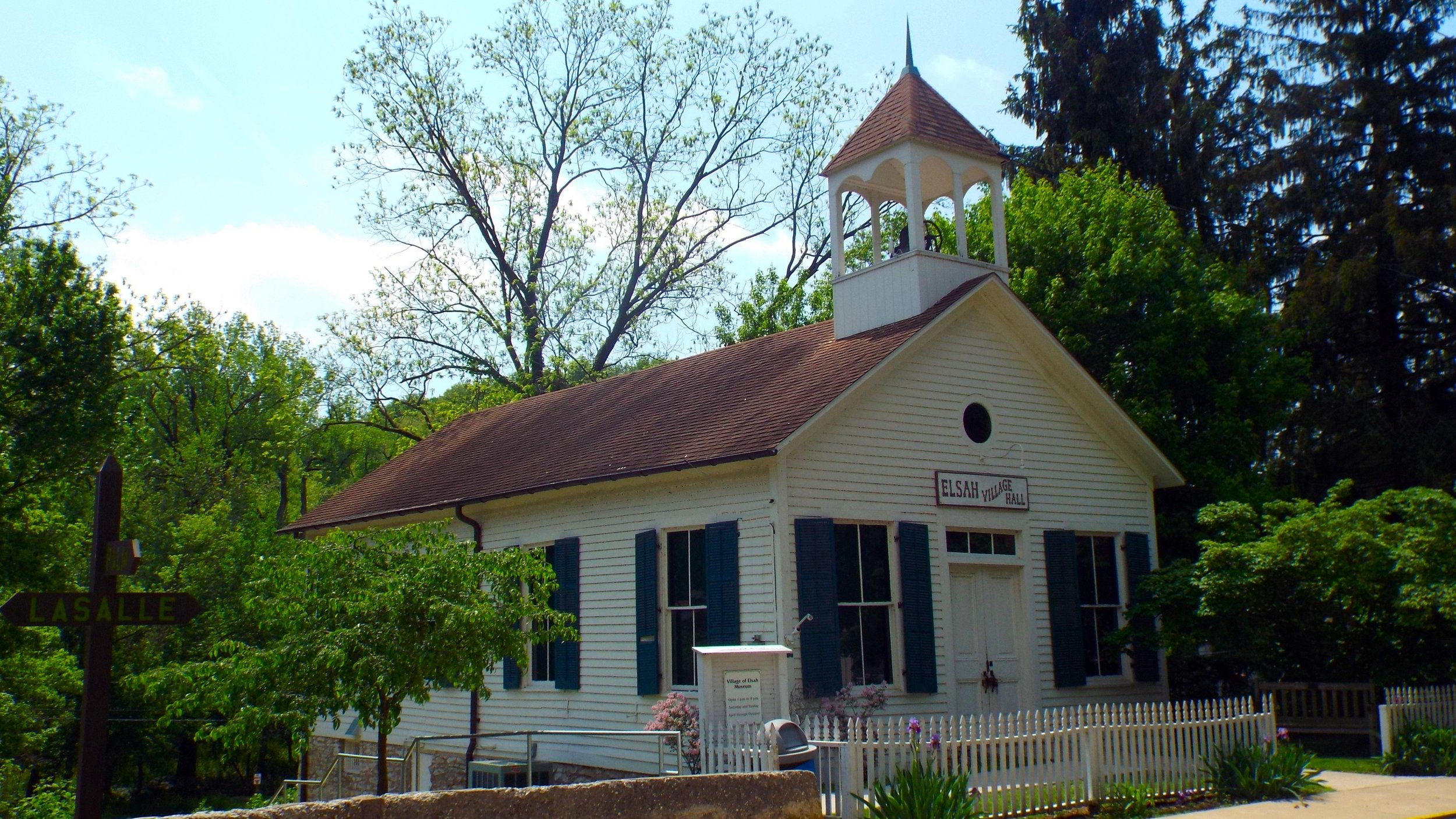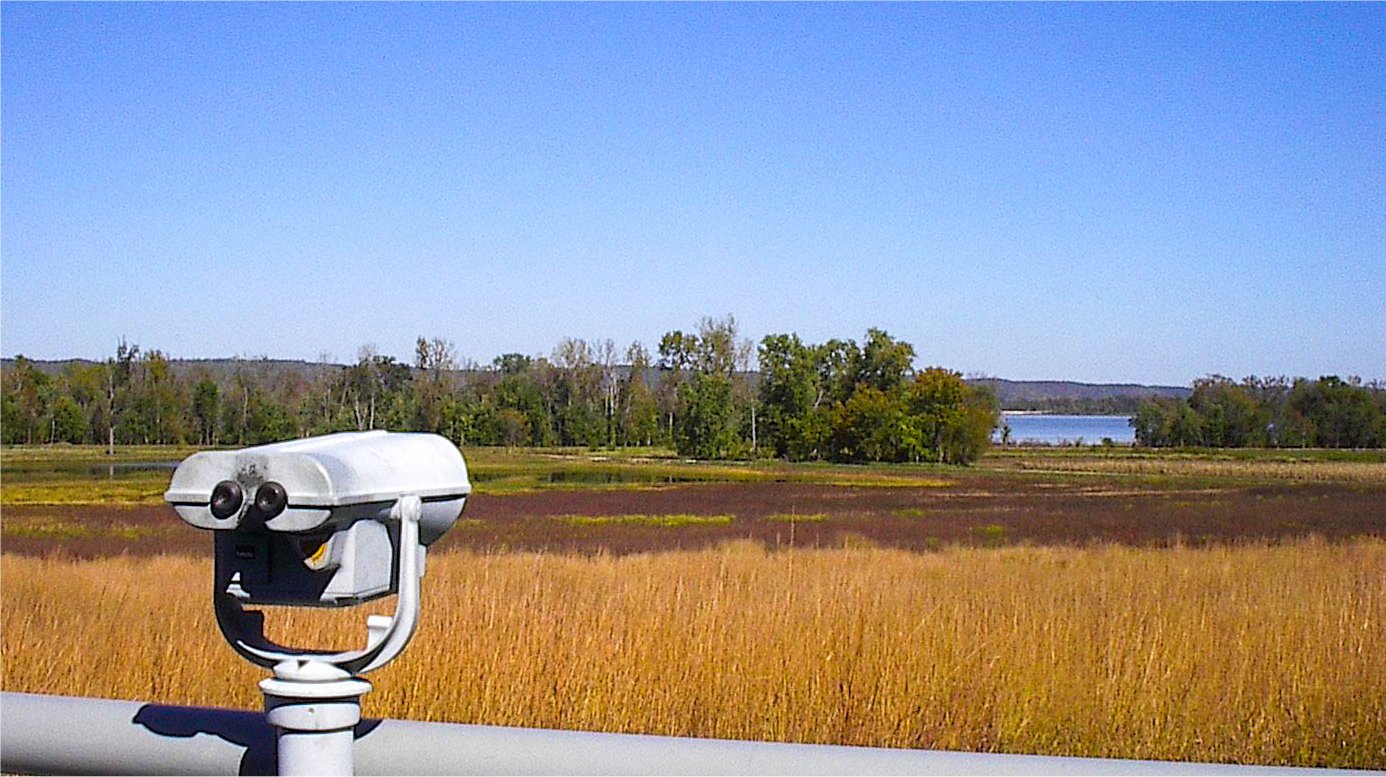Approximately 230 species of birds have been identified within, at the boundaries or flying over Pere Marquette State Park in the past 20 years. Popular locations for bird watching are Stump Lake, in the river bottoms, McAdams Peak and other overlooks along the scenic drive through the Park. The nearby area offers other opportunities. The Two Rivers National Wildlife Refuge and the state operated Mississippi River State Fish & Wildlife Area are just a short drive away. A little farther is the Riverlands Environmental Demonstration Area operated by the U.S. Army Corps of Engineers with the Audubon Center on the grounds with spotting scopes and a wealth of information. The Park is well known as one of the best spots to look for American Bald Eagles in the winter. The Park presents informative programs during Bald Eagle Days about these magnificent creatures during the months of late December, January, and February. The Park is also known for its owl population and presents a series of owl programs in the fall.
Spring
White Pelicans
Summer
Pileated Woodpecker
Fall
Black-capped Chickadee
Winter
Field Sparrow
Pere Marquette State Park is listed on the National Audubon Society's Great River Birding Trail. They suggest that birders start at the Visitors Center and hike the Ravine Trail, which is excellent birding for migrating warblers, as well as Louisiana Waterthrushes, Ovenbirds, and Northern Parulas. Driving in about a half a mile on the main park road there is an overlook for Swan Lake, where you may see the American White Pelicans in spring and fall migration. Excellent birding can also be found on Graham Hollow Road, accessible via the park by driving about 2 miles in on the main park road, or by driving north on IL-100, about 2.6 miles past the town of Grafton.Over 50 species of birds are known to nest in the area which is excellent for flycatchers and warblers. In March watch for the return of Eastern Phoebes and Louisiana Waterthrushes. Listen and watch for breeding songbirds such as Ovenbirds, Summer Tanagers, White-eyed and Red-eyed Vireos.


















